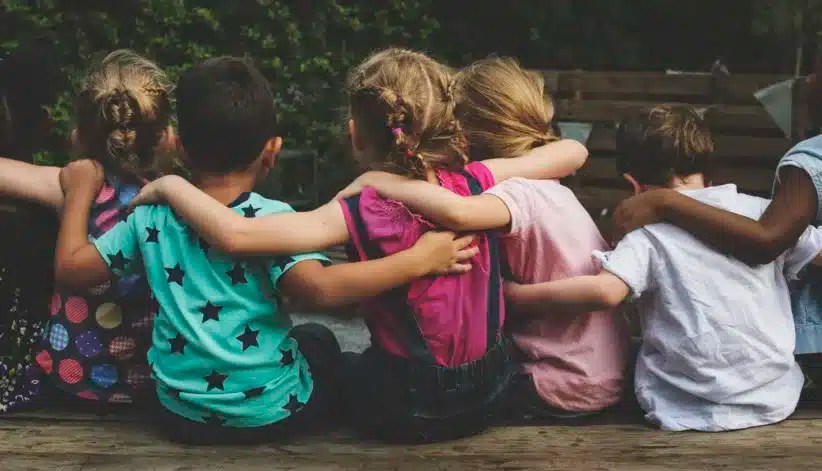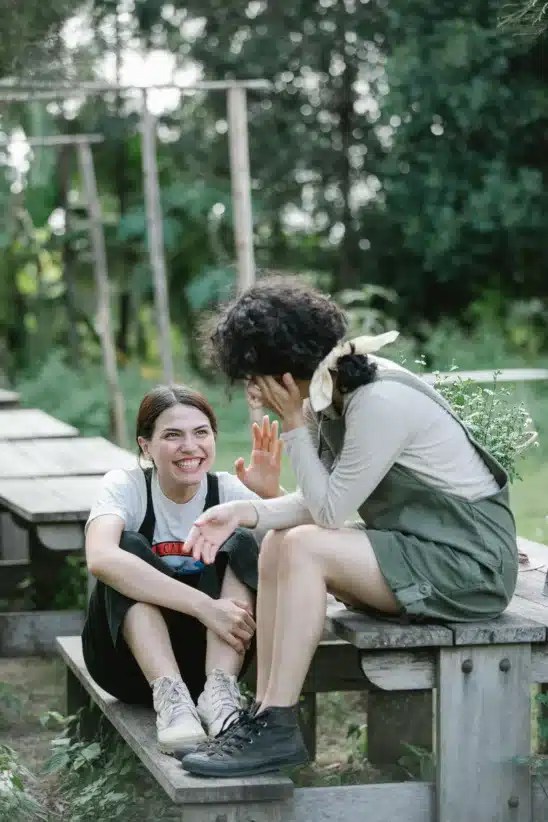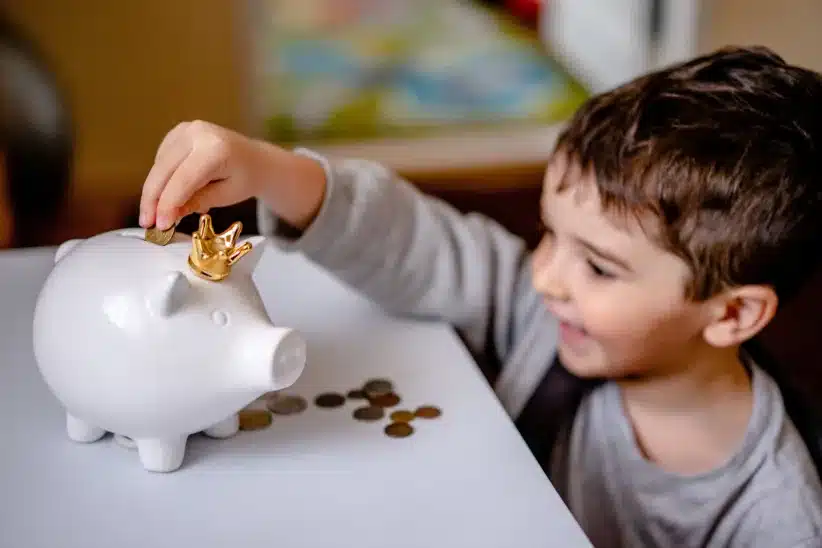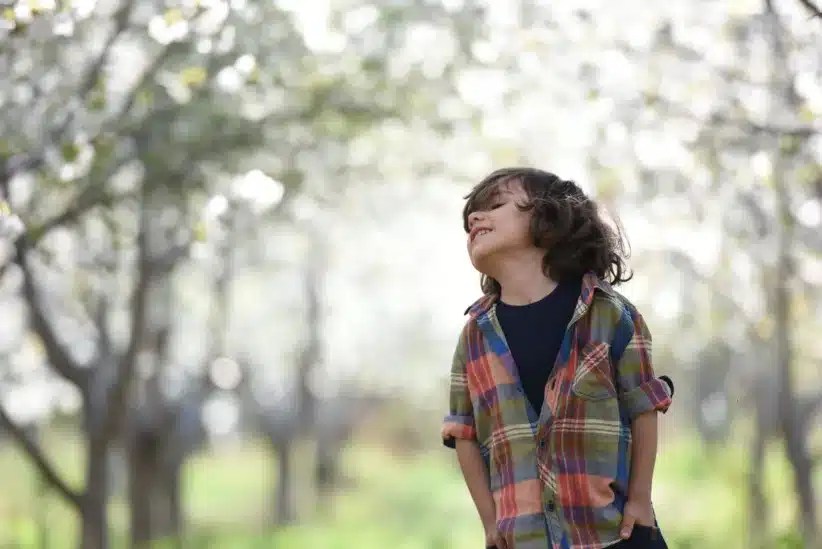
PLEASE NOTE: The city’s biggest Camp Fairs are coming up on Saturday, March 28, and Sunday, March 29, in Manhattan. For families with children ages 3 to teen, the Camp Fairs are free, child-friendly, and feature both Day Camps (in and around the city) and Sleepaway Camps (all over the Northeast). CLICK HERE for details and to register.
In this era of tweeting and texting, the slow-moving, handwritten, paper letter is an endangered species. Unlike an electronic missive, the letter that arrives in an envelope can be touched, smelled, savored, tucked under a pillow, and filed away for decades. But of all types of letters, perhaps the most precious to both the sender and the recipient is the camp letter.
And, I am pleased to observe that the camp letter is alive and well. Most camps still ban the use of the computer and insist that campers lie on their bunk beds during rest hour and write a letter home—a real letter, on paper, with an envelope and stamp. This ritual may be reason enough to send kids to camp: Where else are they going to learn how to address an envelope, lick a stamp, and wait for days to get a response? The camp letter may be the last hard copy standing, the last form of communication not to be replaced by e-mail or texting.
Parents treasure their children’s camp letters, though they may still wish they could call or text to get that immediate access to their kids. Dr. Michael Thompson, in his recent book about camp, Homesick and Happy, cautions parents against giving in to this impulse. He advises parents to stop sending e-mails, to send only one or two packages per summer (if their camper goes to a multiweek camp and the camp allows), and to take a break from checking the children’s camps’ online photos. Instead, he also advocates letter-writing as the best form of communication, with the following rationale: “You want your children who are campers to think about you when they write a letter twice a week and not think about you the rest of the time. They should be thinking about their friends, their counselors, their activities, and the fun they are having.”
Still, it can be hard for parents to wait for news from a child, particularly if they are parents who
are prone to worry. Again, Dr. Thompson offers this insight: “The time between sending and receiving a letter is a valuable opportunity for both parent and child to think about one another without having to do anything with or for each other.” By the time the letter is received, both reader and writer know that everything in the letter has changed. The camper will have already had many more adventures and several shifts in mood. I may be homesick now, but by the time you receive it, who knows? I experienced firsthand the difficulty of following Dr. Thompson’s sage advice.
When my younger son first went to camp, I received two letters just four days apart. The first one kept my husband and me awake. It was all I could do not to call our 11-year-old boy immediately, but I knew that was verboten. Here’s what got us so riled: “Dear Mom and Dad, I HATE it here! My cabin is awful. I get so homesick and pretend it’s allergies. There is so much discipline and b$#&$%t! I absolutely hate it! I don’t talk, eat, or laugh. The activities suck and are so boring. I am optimistic it will get better and, if it doesn’t, then you’ll just pick me up. My cabin-mates are rambunctious and annoying. I always cry during the day. I hope it improves.”
Indeed, in only four days it did improve, with no mention of his earlier upset: “Dear Mom and Dad, Camp is great. So far I have tubed, slept well, played basketball, done riflery, archery, and tons more. My cabin is great, and this afternoon I am going waterskiing for the first time. I can’t wait!”
I hope I responded well to these letters.
While camp letters give both parents and camper a chance to connect in a thoughtful, intimate way, there are other benefits, some of which may not show up for decades. The letters my mother wrote to me at camp have turned out to be a gift that keeps on giving.
Every October, on the anniversary of my mother’s death, I pull out the packet of letters she wrote me when I was a pre-teen at Whippoorwill
Camp in the Adirondacks. As I reread those letters, I feel that she has paid me a visit. Her writing is as distinctive as her full-throttle laugh and the smell of the Jergens hand lotion she always applied to her hands. Her handwriting is loose and playful, and I can imagine her dashing one off before racing to her studio, to her job, to make dinner, play tennis, or visit with friends.
Inserted into many letters is a little sketch—of her sitting at the desk of her new job, of the wild growth of an avocado plant on the kitchen windowsill, or of me toting my turtle to camp on the train. Each letter begins with her characteristic salutation—“Annie dearest,” “Annie dear”—salutations that she used in person, so I hear her voice as well. No one else has ever addressed me like that. Her letters are filled with motherly admonitions and pieces of advice. “Don’t overdo,” she responds when I tell her about my exhaustion and pride at having climbed several Adirondack peaks.
In another letter she states with deadpan humor:“Glad the tortoise is enjoying camp. Perhaps he won’t want to come home!” But when this tortoise ends up dying at camp, she responds with warmth: “Sorry to hear about Whippy. He did look a bit poorly when we were up. He certainly had the nicest grave of all the Fishel turtles.”
I was touched to read that she kept the note I wrote on a fungus on her bureau. Ditto with the letter I wrote on birch bark. I know this couldn’t have been easy given my New Yorker mother’s antipathy for bugs, which might well have hitched a ride in the envelope.
My mother’s letters made another stop. During my father’s last year of life, when he had lost the ability to focus on reading books or watching movies, I got the idea to share her camp letters with him. He brightened immediately when he saw her handwriting and could touch the letters that she had touched. He laughed at her customary sign-off, “Rushing, sending love, Mom.” “Where was she rushing?” he asked rhetorically.
He delighted in the drawings she included, drawings that recorded happy summer trips they took together each summer while their children were safely tucked away at camp. There are pictures of them climbing the Rockies and playing tennis together. “Wasn’t your mother a good artist?”
We spent a whole afternoon with those letters. Listening to them, holding them, and looking at them prompted many reminiscences by my father. It was the most “present” and alive he had been in months.
The letters that I wrote from camp to home also had another time in the sun. Recently, I returned to my childhood home in New York City to clean it out after both my parents had died. I wondered what new things I might learn about my mother and father as I sorted through boxes of photos and papers. I hoped to stumble upon love letters that they wrote each other and war letters that my father wrote to his parents from the Galapagos, where he was stationed during WWII. I was curious to find out which of my childhood artifacts my parents had thought worthy of saving.
As it turned out, there were very few saved artworks, treasured poems, or high school papers. There were no parent-written letters. There was, however, a carefully preserved packet of camp letters that I had written to my parents. The best part was reading them aloud to my young adult sons who were helping with the clean-up.
My careful, round handwriting, my drawings that illustrated the high peaks I’d climbed, and my over-the-top proclamations of love for my parents brought to life my childhood self in a way no stories or photographs had ever done. We laughed at all the mentions in the letters of my getting lost at camp. “I found the lake today,” I proudly reported. “But I couldn’t find my cabin because they all look the same.” These camp letters offer a chance for me to remember the child I was and the continuity of certain personality traits. Decades later, I have the same terrible sense of direction. (I chuckle to read that at age nine my nickname was “Dr. Fishel” because I came supplied with Band-Aids and calamine lotion, and had lots of advice for stiff necks and other ailments).
Other letters reveal that I struggled with homesickness. I wrote: “I miss you but not painfully.” In another: “I miss you but not harmfully, if you know what I mean.” My son blurts out: “You were so adorable!” Just as her letters let me visit with my mother, gone for more than a decade, my camp letters allowed my son to visit with a child version of me. Such is the power of camp letters.
As we continued our clean-up operation of my childhood home, my son casually asked me if I’d saved his camp letters. I was glad to tell him, “Every one.” I didn’t add, though it would also have been true, “I hope you’ve saved the ones I wrote you at camp, because someday you may find them a comfort.”
Anne K. Fishel, Ph.D, is the director of The Family and Couples Therapy Program at Massachusetts General Hospital in Boston, where she is also an associate clinical professor of Psychology at the Harvard Medical School. She is the co-founder of The Family Dinner Project and the author of Home for Dinner: Mixing Food, Fun, and Conversation for a Happier Family and Healthier Kids.
Reprinted from Camping Magazine by permission of the American Camp Association; copyright 2014 by the American Camping Association, Inc.





















